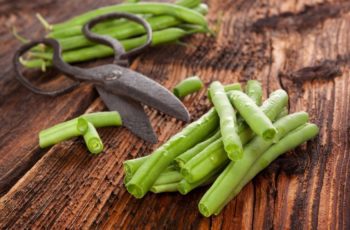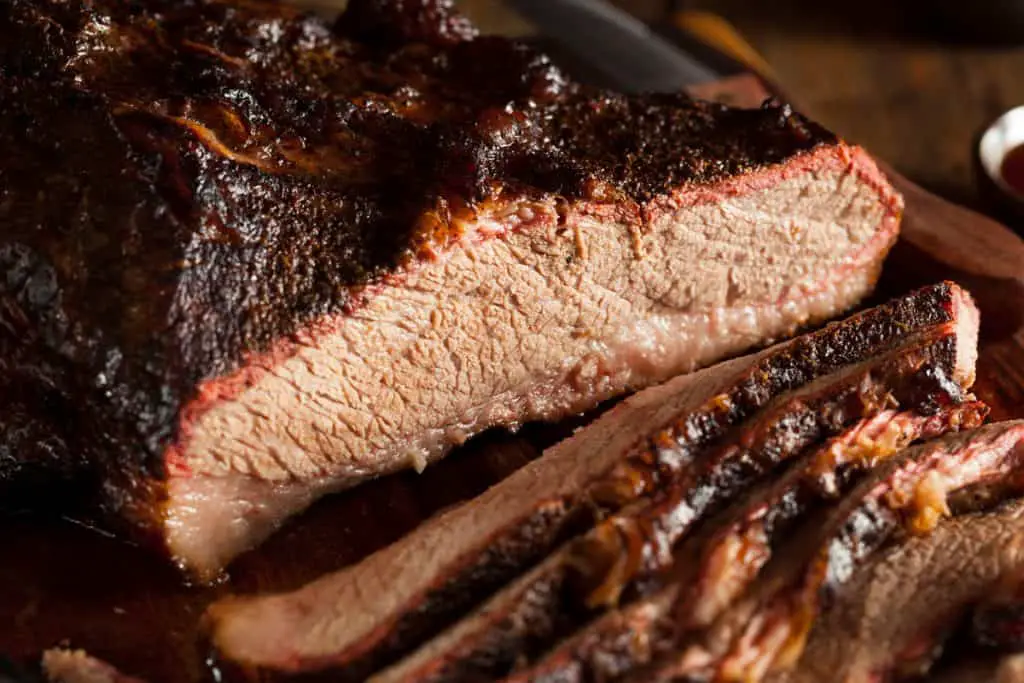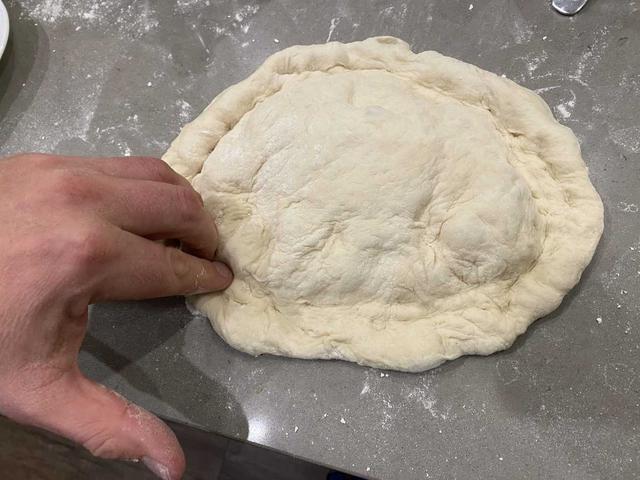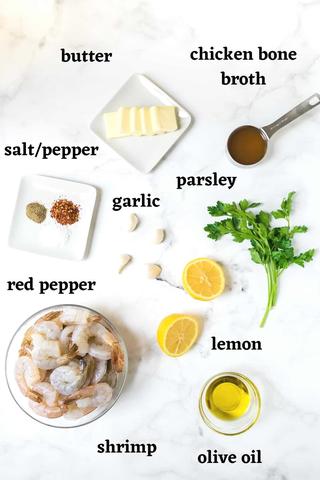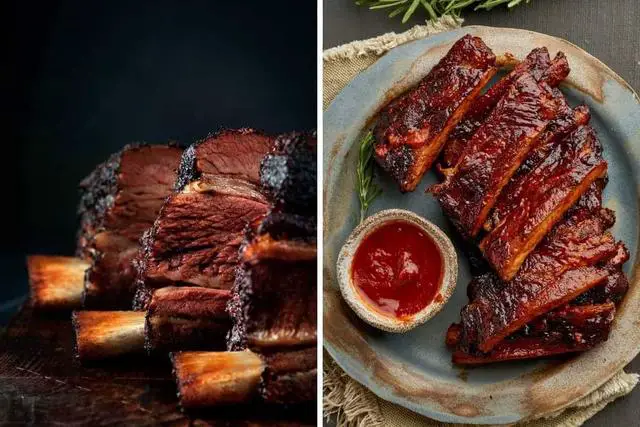
“Unveiling the Meaty Mystery: Ribs – Pork or Beef? Exploring the origins and differences of these savory cuts to settle the age-old debate once and for all. Delve into the delectable world of ribs as we dissect their composition, flavors, and culinary applications, providing clarity on whether they belong to the pork or beef realm. Get ready for a mouthwatering exploration that will leave you craving more!”
Beef Ribs vs Pork Ribs: Differences Explained
The most basic difference between beef ribs and pork ribs is the animal they come from. Beef ribs come from a steer, while pork ribs come from a pig.
There are two main types of pork ribs: baby back ribs and spare ribs. Baby back ribs come from the upper portion of the rib cage and are smaller in size. Spare ribs are taken from the bottom of the rib cage and are considered more meaty but less tender.
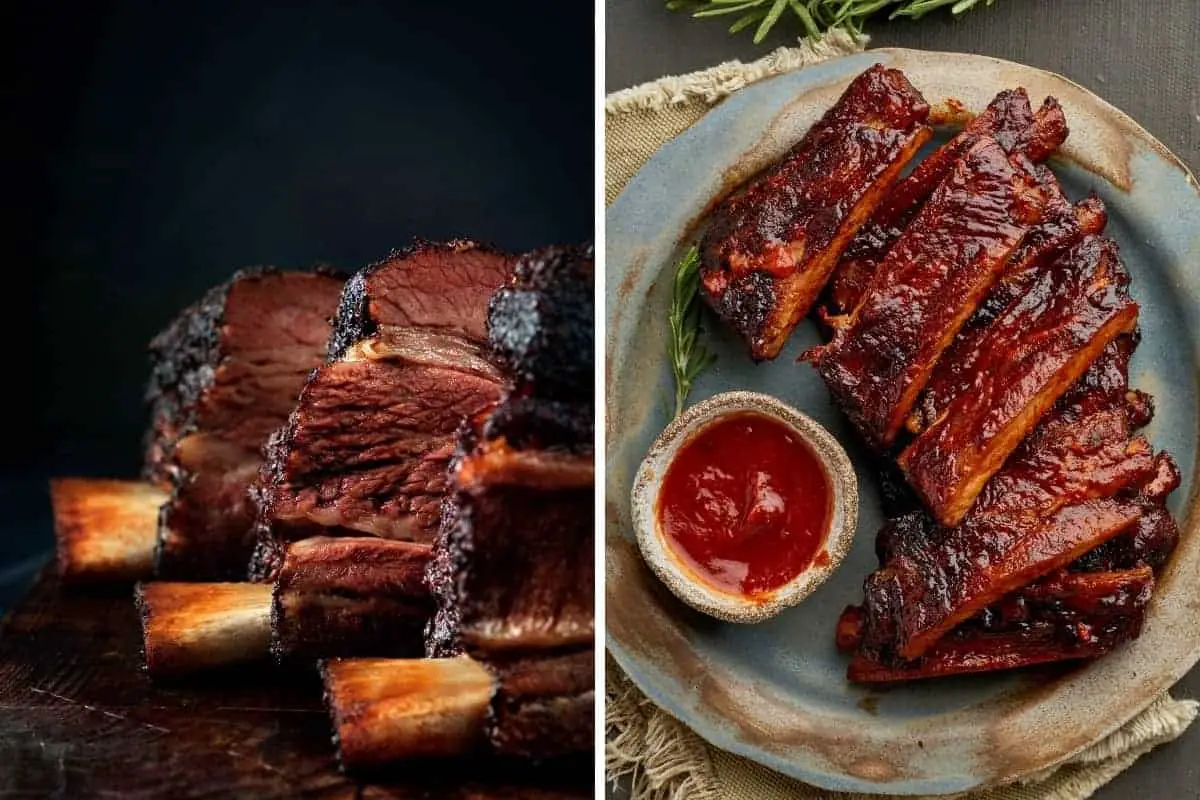
There are also different types of beef ribs, including plate short ribs, chuck short ribs, and beef back ribs. Plate short ribs come from the short plate primal and are often referred to as “Brontosaurus” or “Dinosaur” beef ribs due to their large size. Chuck short ribs come from the chuck primal and have great marbling and beefy flavors. Beef back ribs come from the rib primal after the ribeye muscle has been removed.
In terms of price, beef ribs are generally more expensive than pork ribs. However, pork ribs make for a relatively easy smoke for backyard barbecue.
When it comes to preparation, beef and pork ribs have some differences. Beef ribs usually require minimal trimming and often leave the membrane on the bone side to help hold the meat on during smoking. Pork ribs, on the other hand, typically require removing the membrane from the bone side.
For seasoning, beef tends to work well with simple spices like kosher salt, pepper, and garlic powder. Pork rubs can be more adventurous with ingredients like sugar, chilis, and paprika.
In terms of cooking time, baby back pork ribs take about 2 hours to smoke while spare pork ribs take about 3 hours. Beef back ribs usually take around 4-5 hours, while short plate ribs can take 7-9 hours.
In the end, the choice between beef and pork ribs often comes down to personal preference. Some people prefer the flavor and tenderness of beef ribs, while others enjoy the affordability and ease of smoking pork ribs.
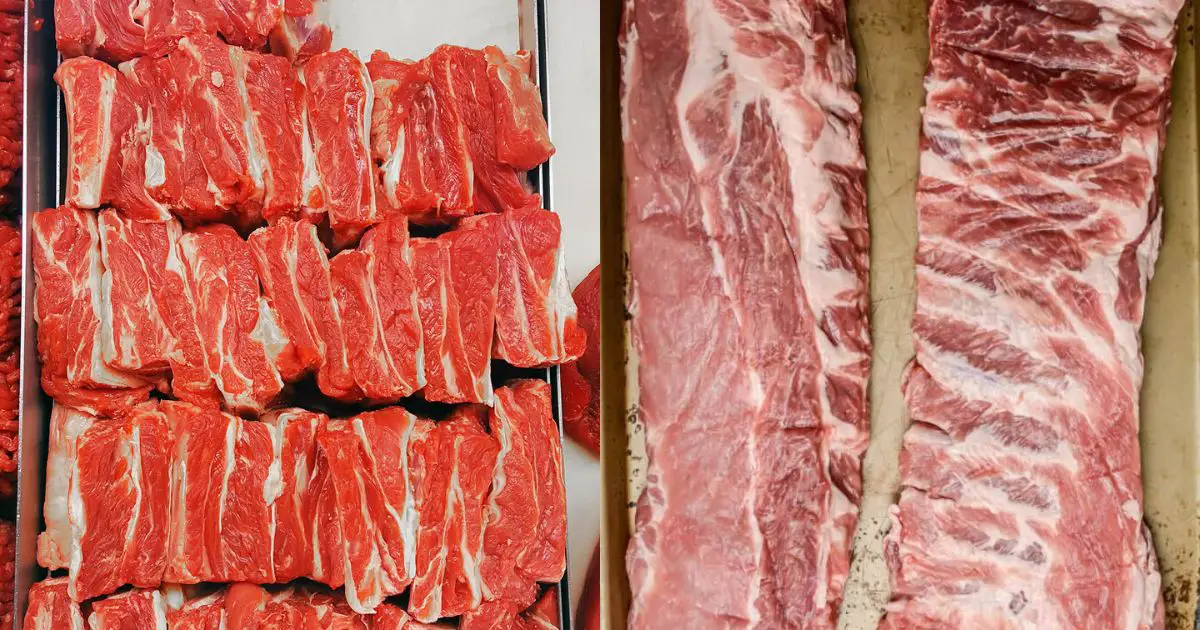
Types or Pork Ribs
There are two main types of pork ribs: baby back ribs and spare ribs. Baby back ribs come from the upper portion of the rib cage, where the meat comes from the loin. They are smaller in size compared to spare ribs and are often called “loin” back ribs. Spare ribs, on the other hand, are taken from the bottom of the ribs or the underbelly of the pig. They extend around the belly and connect to the sternum. Spare ribs are considered more meaty and less tender than baby back ribs due to their added fat content.
In addition to baby back and spare ribs, there are also country-style pork ribs that can be sold bone-in or boneless. These ribs come from either the shoulder or loin area of the pig.
Baby Back Ribs
Baby back ribs are a type of pork rib that come from the upper portion of the rib cage. They are also known as “loin” back ribs because the meat comes from the loin area of the pig. These ribs are smaller in size compared to other pork ribs and get their name from their location on the pig. Baby back ribs are considered more tender and leaner than spare ribs. They are often preferred for their tenderness and can be cooked relatively quickly.
Spare ribs, on the other hand, come from the bottom of the rib cage or underbelly of the pig where bacon is sourced from. They extend around the belly and connect to the sternum. Spare ribs are larger and meatier than baby back ribs, but they are also less tender. They have a higher fat content due to their location, which adds flavor to the meat when cooked. Spare ribs are usually preferred by those who enjoy a more substantial and flavorful rib.
Apart from baby back and spare ribs, there are also country style ribs, which can be sold bone-in or boneless. These ribs come from either the shoulder or loin area of the pig. Country style ribs offer a different texture and flavor compared to other pork ribs. They can be a versatile option for various cooking methods such as grilling or braising.
In summary, pork ribs come in different types including baby back, spare, and country style. Baby back ribs are smaller and more tender, while spare ribs are larger and meatier with added fat content for flavor. Country style ribs provide a different texture and flavor experience altogether.
Spare Ribs
Spare ribs are a popular type of pork rib that are known for their meatiness and rich flavor. They come from the underbelly of the pig, where bacon is also sourced. Spare ribs extend around the belly and connect to the sternum. Compared to baby back ribs, spare ribs are larger and have more meat on them. They are considered less tender but have a higher fat content, which adds flavor to the meat. When preparing spare ribs, it is common to do a St. Louis Cut, which involves removing the rib tip, flap, false lean, and any smaller bones.
When serving spare ribs, it is typical to serve 3-4 ribs per person as a serving size. This is true even when doing a St. Louis Cut. The larger size of spare ribs allows for more generous servings compared to baby back ribs. However, it is important to consider the preferences and appetites of your guests when determining the number of servings needed.
When smoking spare ribs, they generally take around 3 hours to cook at an average temperature of 250°F (121°C). The cooking time may vary depending on factors such as the thickness of the meat and personal preference for tenderness. It is recommended to use wood chips or chunks like cherry or pecan for smoking spare ribs to enhance their flavor.
Spare ribs have a rich and savory flavor that comes from their higher fat content compared to baby back ribs. When seasoning spare ribs, there are various options available depending on personal taste preferences. Dry rubs often include ingredients like sugar, chili powder, paprika for added sweetness and heat. Some people also enjoy using barbecue sauces or glazes during the cooking process for additional flavor.
In conclusion, spare ribs are a delicious and meaty option for barbecue enthusiasts. They offer a flavorful and satisfying eating experience, with the added benefit of being more affordable than beef ribs. Whether you choose to smoke or grill spare ribs, they are sure to be a crowd-pleaser at your next backyard barbecue.
Types of Beef Ribs
There are three main types of beef ribs: plate short ribs, chuck short ribs, and beef back ribs. Plate short ribs come from the short plate primal and are sometimes referred to as “Brontosaurus ribs.” They are cut into 3-bone slabs and have heavily marbled meat known as the “lifter” muscle. Chuck short ribs come from the chuck primal and are often called “Dino” beef ribs. They get great marbling and have a super beefy flavor. They are typically sold in singular bones with an “English cut.” Beef back ribs come from the rib primal after the ribeye or prime rib has been removed. The meat is between the bones rather than on top of them.
In terms of serving size, plate short ribs are usually served as 3-bone slabs, with each rib providing one serving. Beef back ribs can have 6-8 bones, meaning 1-2 servings per person for a half or partial rack. Chuck short ribs are typically sold with 3 bones per tray, offering 1-3 servings per person.
Plate Short Ribs
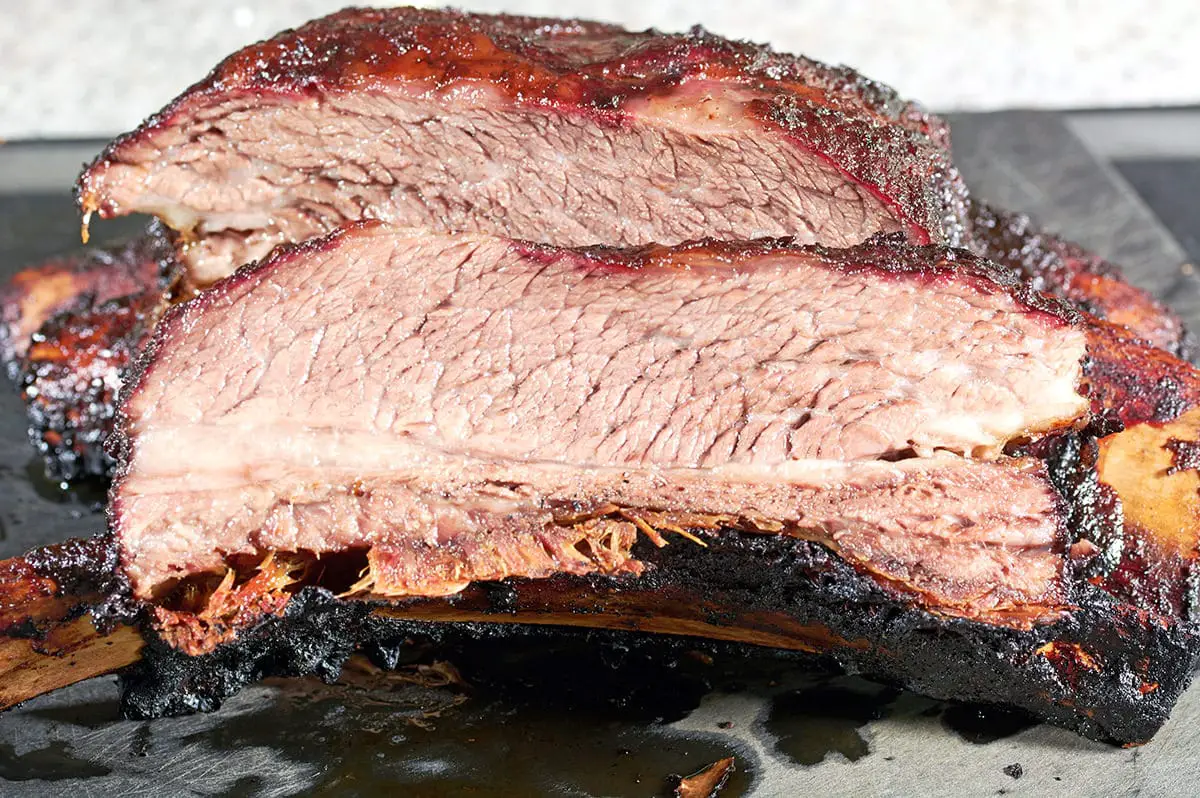
Plate short ribs are a type of beef rib that comes from ribs 6, 7, and 8 of the short plate primal. They are often referred to as “Brontosaurus ribs” due to their large size. Plate short ribs are typically sold as 3-bone slabs and can be quite meaty. When trimmed, they are cut into ribs that are about 4-5 inches in length. These ribs have a heavily marbled muscle called the serratus ventralis, which gives them the nickname “brisket on a stick.” Plate short ribs require a longer cooking time and are usually smoked or slow-cooked to achieve tenderness.
Chuck Short Ribs
Chuck short ribs come from the chuck primal and are colloquially known as “Dino” beef ribs. These ribs are cut just above the brisket and typically have great marbling, similar to Ribeye steaks. They offer a super forward beefy flavor that is also common with chuck roasts. In grocery stores, chuck short ribs are usually sold in overwrap trays with three bones per tray, which translates to 1-3 servings per person.
When it comes to preparing chuck short ribs, minimal trimming is usually done. The membrane on the bone side of the ribs is typically left on to help hold the meat on the bone during smoking. Some people also choose to remove the fat cap or silver skin from the top of short plate ribs, although it is not always necessary as the fat cap tends to render well.
In terms of seasoning, kosher salt, pepper, and garlic powder work well with beef ribs. Barbecue enthusiasts may also opt for seasoning salt like Lawry’s to enhance the beefy flavors. When smoking chuck short ribs, they are usually braised rather than smoked like other types of beef ribs.
Overall, chuck short ribs offer a flavorful and meaty option for barbecue lovers who prefer beef over pork.
Beef Back Ribs
Beef back ribs are taken from the rib primal after the ribeye muscle or prime rib have been removed. They are typically between 6-8 bones and are known for their meaty and flavorful qualities. Beef back ribs tend to be less expensive compared to other beef cuts, making them a budget-friendly option for barbecue.
When smoking beef back ribs, minimal trimming is usually done. The membrane on the bone side is often left on to help hold the meat on the bone during smoking. Seasoning with simple spices like kosher salt, pepper, and garlic powder is common to enhance the natural beef flavors. Beef back ribs are usually smoked for 4-5 hours at a temperature of 250°F, using wood such as cherry, post oak, or pecan.
The taste of beef back ribs is rich and beefy, with a smoky flavor from the smoking process. The serving size for beef back ribs is typically 1-2 servings per person for a half/partial rack. The cooking time for beef back ribs can vary depending on the size of the meat, but they generally take longer to cook compared to pork ribs.
Cost Differences Between Pork and Beef Ribs
When it comes to cost, pork ribs are generally cheaper than beef ribs. This is due to the fact that pork is more readily available and pigs are smaller animals compared to cows. In most cases, you can feed the same number of people for a lower price when using pork ribs. Beef ribs, on the other hand, tend to be more expensive and can be harder to find in some areas.
Despite their size difference, the serving sizes of pork and beef ribs are similar. For short plate beef ribs, which usually come in 3-bone slabs, each rib can be considered as one serving. However, the middle rib tends to have more meat than the outer two. Beef back ribs usually have 6-8 bones per rack, which translates to 1-2 servings per person if a half rack is considered a serving size. Chuck short ribs typically come in overwrap trays with 3 bones, providing 1-3 servings per person. When it comes to pork ribs, spare ribs are larger than baby back ribs and are typically served as 3-4 ribs per serving. Baby back ribs usually offer 1-2 servings per half rack.
Taste preferences vary from person to person when it comes to choosing between pork and beef ribs. Some individuals may prefer the flavors of beef while others enjoy the taste of pork more. Factors such as marbling, fat content, and seasoning choices can influence personal preference. It’s also worth noting that cooking time can play a role in decision making – if someone wants to smoke meat for a shorter period of time, they may opt for quicker-cooking pork ribs instead of beef ribs.
Overall, while both types of ribs have their own unique characteristics, the choice between pork and beef ribs ultimately comes down to personal taste, cost considerations, and cooking preferences.
Size Differences and Serving Sizes Between Pork and Beef Ribs

When it comes to size, beef ribs are generally larger than pork ribs. This is expected, as cows are much bigger animals than pigs. In fact, beef ribs are often referred to as “Dinosaur” or “Brontosaurus” ribs due to their substantial size. However, despite their larger size, the serving sizes for both beef and pork ribs are similar. You can feed the same number of people with a rack of pork ribs as you would with a rack of beef ribs.
Let’s take a closer look at the serving sizes for each type of rib. Pork spare ribs are typically bigger than baby back ribs and are usually served in portions of 3-4 ribs per person. The same goes for St. Louis cut spare ribs, which have been trimmed to remove excess fat and cartilage. Baby back ribs, on the other hand, offer 1-2 servings per person assuming a half rack is considered one serving.
Beef back ribs usually come in racks with 6-8 bones, resulting in 1-2 servings per person if a half or partial rack is considered one serving. Short plate beef ribs are sold in 3-bone slabs, meaning you’ll get three servings from each slab. However, it’s important to note that the middle rib will typically have more meat than the outer two.
Preparation Differences Between Beef and Pork Ribs
When it comes to preparing beef ribs and pork ribs, there are a few key differences to keep in mind. One of the main differences is the trimming process. While beef ribs often require minimal trimming, it is recommended to remove the membrane from the bone side of pork ribs as it is tough and does not enhance the eating experience.
In terms of seasoning, beef ribs can be simply seasoned with kosher salt, pepper, and garlic powder to enhance their natural beefy flavors. On the other hand, pork ribs are often seasoned with a variety of spices such as sugar, chili powder, and paprika for a more adventurous flavor profile.
When it comes to cooking methods, beef back ribs and short plate ribs are usually smoked, while chuck short ribs are typically braised. Pork ribs can be smoked or cooked on a grill or smoker for a shorter period of time compared to beef ribs.
Smoking Differences Between Beef and Pork Ribs
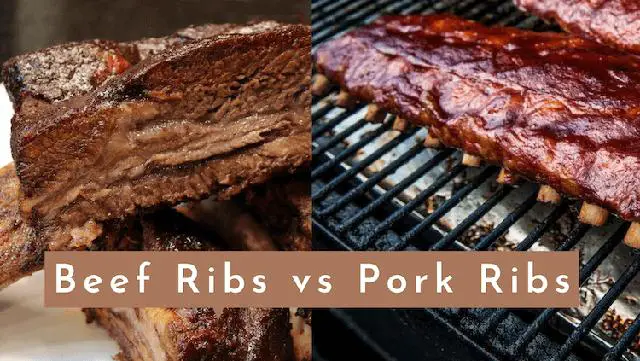
When it comes to smoking beef ribs versus pork ribs, there are a few key differences to consider. First, in terms of preparation, beef ribs tend to require minimal trimming and the membrane on the bone side is often left intact. This is because beef ribs shrink significantly when smoked, and the membrane helps to hold the meat on the bone. On the other hand, it is best to remove the membrane from pork ribs as it is tough and inedible.
In terms of seasoning, beef ribs can be enhanced with simple spices like kosher salt, pepper, and garlic powder to bring out their naturally beefy flavors. Pork ribs, on the other hand, offer more room for experimentation with different types of sugar, chilis, paprika, and other spices in dry rubs.
When it comes to cooking time, pork ribs generally cook faster than beef ribs. Baby back ribs take about 2 hours to smoke while spare ribs take around 3 hours. In comparison, beef back ribs usually require 4-5 hours of smoking while short plate ribs can take anywhere from 7-9 hours depending on their size.
Which Tastes Better, Beef or Pork Ribs?
Taste is a subjective matter and ultimately depends on personal preference. Some people may prefer the rich and beefy flavors of beef ribs, while others may enjoy the sweeter and more tender taste of pork ribs. The choice between beef and pork ribs comes down to individual taste buds.
Beef ribs are known for their intense flavor and tenderness. They have a robust beefy taste that many meat lovers enjoy. The marbling in beef ribs adds richness and juiciness to the meat, making them incredibly flavorful.
Pork ribs, on the other hand, have a slightly milder taste compared to beef ribs. They are often described as sweeter and more tender. The fat content in pork ribs gives them a succulent texture and enhances their overall flavor.
In conclusion, ribs can be either pork or beef, depending on the animal they come from. Pork ribs are more commonly consumed and have a sweeter flavor, while beef ribs are larger and have a richer taste. Both types can be enjoyed in various delicious recipes, satisfying different taste preferences.
Learn More About Grilling
If you want to learn more about grilling, check out these other helpful resources!

